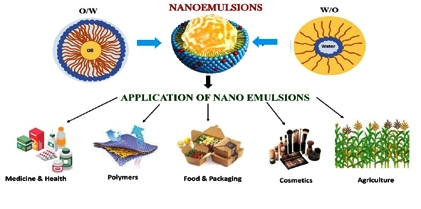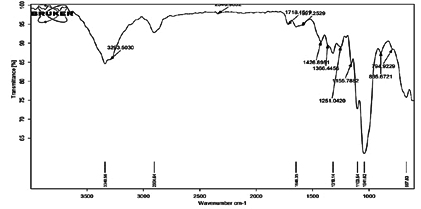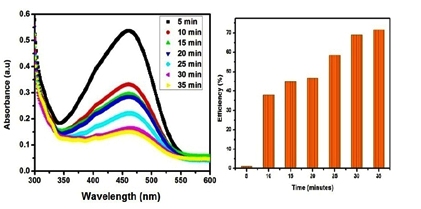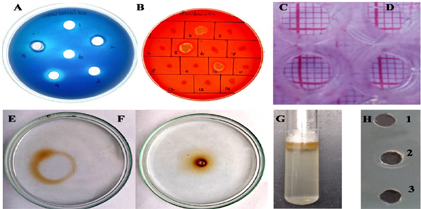Volume -11, Issue -3 Mar 2025

https://doi.org/10.29294/IJASE.11.3.2025.4111-4115
Our research on the development of Cell Targeted Drug Delivery (CTDD) Conjugation Technology based on Hyaluronic acid (HA), a naturally occurring polysaccharide uniquely involved in biological processes, was initiated in 1998, in the Institute of POLYbios, AREA Science Park, Trieste, Italy. The fundamental aspects of the chemistry of HA and its significance in drug delivery were explored....
Read More
https://doi.org/10.29294/IJASE.11.3.2025.4116-4119
Computational chemistry relies heavily on quantum mechanical calculations to predict molecular properties. Gaussian, widely used quantum chemistry software generates log files containing crucial electronic parameters. However, manually extracting and analyzing these properties is time-consuming and prone to errors. We present an R Shiny application that automates the extraction and computation...
Read More
https://doi.org/10.29294/IJASE.11.3.2025.4120-4130
Pregnane, 17β- ethylandrostane, a C21 crystalline steroid, is indirectly a parent of progesterone. Its derivatives show some interesting biological properties. Thus, an attempt has been made to identify a few structures from the CSD database (version: 2023) for their detailed crystallographic and computational analysis. The X-ray structures have been compared with their corresponding optimized...
Read More
https://doi.org/10.29294/IJASE.11.3.2025.4131-4149
One of the most important concern in the 21st century is the demand for the green technology for the preparation of nanomaterials. This work presents the fabrication of green silver nanoparticles (AgNPs) with a combined plant leaf extract such as Azadirachta indica and Mangifera indica L. The mixture of leaf extract acts as a reducing and stabilizing agent. The presence of many phytochemicals in...
Read More
https://doi.org/10.29294/IJASE.11.3.2025.4150-4163
Rice (Oryza sativa L.) is a crucial global food crop, although it is extremely susceptible to drought stress owing to its adaption to wetland environments. This study assessed nine enhanced rice lines possessing qDTY3.1 and qDTY2.1, significant quantitative trait loci (QTLs) for drought resistance during the flowering stage, under both flooded and drought stress conditions. The experiment was...
Read More
https://doi.org/10.29294/IJASE.11.3.2025.4164-4174
Biogenic nanoparticles synthesis is gaining more attention from researchers due to its eco-friendly and biocompatible nature. In this study, we report an easy and green method for silver nanoparticle preparation using the leaf extract of Phyllanthus niruri. The constituents of PN extract act as reducing and capping agents. The formation of PN-AgNPs was confirmed by UV-Vis Spectroscopy which...
Read More
https://doi.org/10.29294/IJASE.11.3.2025.4175-4195
The antiviral drug Molnupiravir (MOL) and its conjugate with Hyaluronic Acid (HA-MOL) demonstrate the significance of targeting the main protease (Mpro) and papain-like protease (PLpro) of SARS-CoV-2. The pure drug Molnupiravir and the designed polymer-drug conjugate using Molnupiravir and hyaluronic acid were evaluated through molecular docking, pharmacokinetic analysis, molecular dynamics...
Read More
https://doi.org/10.29294/IJASE.11.3.2025.4196-4205
Marine organisms, particularly algae, have garnered significant attention due to their rich biodiversity and potential as sources of novel bioactive compounds. Among them, Caulerpa racemosa, a green alga commonly found in tropical marine environments has been recognized for its therapeutic potential, but its biological activities remain underexplored. The current study investigates the...
Read More
https://doi.org/10.29294/IJASE.11.3.2025.4206-4222
Extensive plastic use across industries such as automotive, construction, and packaging has significantly contributed to environmental concerns. Understanding the sources of microplastic contamination in food and its associated health risks is crucial for minimizing exposure. As a result, this issue has gained attention due to its potential negative impact on human health. Food contamination...
Read More
https://doi.org/10.29294/IJASE.11.3.2025.4223-4236
The research aims to establish a new UPLC method for estimating Tepotinib in human plasma. A simple, precise, and accurate RP-UPLC technique has been developed to quantify Tepotinib (TEP) in human plasma by employing a Quality by Design (QbD) approach. The effective separation of TEP was accomplished using the ACQUITY UPLC HSS C18 Column (1.8 µm, 2.1 mm×100 mm) and 0.01N Ammonium formate :...
Read More
https://doi.org/10.29294/IJASE.11.3.2025.4237-4256
Dental caries, the most common chronic infectious disease in the oral cavity, affects around 3.5 billion individuals worldwide, with a particularly high prevalence in middle-income countries. Streptococcus mutans is a major cariogenic pathogen recognized for its ability to form biofilms that lead to tooth decay. Molecular docking studies showed stable interactions between lactotransferrin (LTF)...
Read More
https://doi.org/10.29294/IJASE.11.3.2025.4257-4281
As such, this review aims at reviewing the current developments in the use of nanoemulsion (NE) particularly in the following fields such as cosmetics and pharmaceuticals. Nanoemulsions, especially those with droplet sizes below 200 nm, are environment-friendly to improve solubility and bioavailability and are efficient in the delivery of the active ingredient. The study on pharmaceutical...
Read More
https://doi.org/10.29294/IJASE.11.3.2025.4282-4293
This work aims to develop an antimicrobial and UV-protective cotton fabric from long staple Egyptian cotton Giza 94 based on forming a coating of nano TiO2-rutile before and after the dyeing process using reactive Remazol yellow 3RS, C.I 167 dye. Pad-dry and microwave curing treatment was used for nano TiO2-rutile fixation on the fabric surface. A new band corresponding to C=O stretching at 1748...
Read More
https://doi.org/10.29294/IJASE.11.3.2025.4294-4302
: In recent days, the removal of adulterants from the water is furthered by photocatalytic activity. The photocatalytic activity (PCA) of proposes it as a significant catalyst. The nanoparticle reacts with the dye molecule and purifies the adulterant present in the contaminated water. The hydrothermal method is adapted to synthesize CdO nanoparticles. The synthesized CdO nanoparticle powder is...
Read More
https://doi.org/10.29294/IJASE.11.3.2025.4303-4313
Biosurfactants are microbial surfactants with significant potential in environmental applications, particularly bioremediation and oil spill management. This study aimed to isolate and characterize biosurfactant-producing bacteria from oil-contaminated sites in Chennai, Tamil Nadu, India. A total of 42 bacterial isolates were screened using Blue agar, Blood hemolysis, Drop collapse, and Oil...
Read More
https://doi.org/10.29294/IJASE.11.3.2025.4314-4327
In this work, first-principles calculations based on density functional theory (DFT) inside the Quantum ESPRESSO framework are used to investigate the structural and electrical properties of vanadium carbide (VC) and vanadium nitride (VN). Hybrid exchange-correlation functional, specifically the PBE0 hybrid functional, and a modified potential model incorporating covalency effects are employed...
Read More
https://doi.org/10.29294/IJASE.11.3.2025.4328-4350
The growing global population is driving the stipulation for food and agronomical resources. The application of traditional agrochemicals in the agriculture sector has wide-ranging consequences on both organisms and the environment. Prospects in formulating nanoemulsions used as nano delivery systems for agrochemicals in fields, crop protection, and farm animal management by improving animal and...
Read More
https://doi.org/10.29294/IJASE.11.3.2025.4351-4361
The Mathematical degradation process model was found to be appropriate and applied to two bio-object frameworks: (i) comparison among parous and nulliparous women based on low and high Body Mass Index (BMI), waist circumference (WC), and oral contraceptive (OC) consumption levels, and (ii) the profiling of 17β-estradiol and progesterone across upper, middle, and lower tertiles. Validation...
Read More
https://doi.org/10.29294/IJASE.11.3.2025.4362-4373
The ethanolic extract of white oyster (Pleurotus ostreatus) mushrooms was examined their macro-agronomic features, chemical compound properties and antioxidant activities. Additionally, P. ostreatus was found to be an excellent decomposer of low-density polyethylene (LDPE) because it was able to tear down an LDPE film, which was a surprise. The mushroom exhibited a considerable 23% reduction in...
Read More
https://doi.org/10.29294/IJASE.11.3.2025.4374-4385
A computational study is conducted to examine the thermal and concentration transfer characteristics, In addition to skin friction effects, in a parabolic flow an infinitely vertical plate with a varying temperature profile. The study employs numerical techniques to compute the governing partial differential equations, considering key physical parameters that influence flow, are examined in...
Read More
https://doi.org/10.29294/IJASE.11.3.2025.4386-4391
We will investigate how to generalize the saddle-point approximation of integrals. The ordinary saddle-point method, often called Laplace’s method, can be applied when the integrand is sufficiently sharply peaked. However, when the integrand is not that sharply peaked, a generalization of this concept must be done. This paper analyzes such a...
Read More
